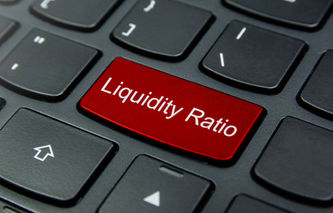Definition
The term liquidity spread is used to describe the premium that flows to a party willing to provide liquidity to a party that is demanding it. Liquidity spreads apply to investments such as stocks and bonds, futures contracts, exchange-traded securities, options, commodities as well as other types of assets.
Calculation
While the term liquidity spread can apply to a wide variety of assets, the bid-ask spread illustrates how this premium flows to the party supplying liquidity:
Bid-Ask Spread (%) = ((Offer - Bid) / Offer) x 100
Where:
Bid is defined as the price a seller is willing to accept for the asset.
Offer is defined as the price a buyer is willing to pay for the asset.
Explanation
Liquidity spreads apply to a large number of assets and is the premium each party is willing to pay in exchange for liquidity. It can be thought of as the cost of making an instantaneous transaction. The premium is paid by the party that is demanding liquidity, while the premium flows to the party supplying it. Under competitive conditions, the bid-offer spread measures the cost of making transactions without delay. The difference in price paid by an urgent buyer and that received by an urgent seller is the liquidity cost.
For example, investors in long-term bonds assume a risk that interest rates will decline over time, lowering the value of the bonds they're holding. The liquidity spread compensates the holder of the bond for this risk. For bondholders, the premium is a function of both the term to maturity as well as interest rate volatility. The greater the volatility of interest rates, the higher the liquidity spread. Bonds of longer maturities will be affected to a larger degree than those of shorter maturities. This is sometimes referred to as the term premium.
Liquidity spreads are also a function of secondary market activity. In markets where there are a large number of buyers and sellers, the spread will be relatively small; however, it's always a positive value. When the bid-ask spread approaches zero, this is referred to as a frictionless asset.
Example
It's common for brokers to provide liquidity in a market. They're compensated for assuming this risk through the liquidity spread. If the market is thinly traded, their risk is higher and so is the premium. In this example, let's assume a buyer is willing to pay (ask) $13.39 for 1,000 shares of stock, while the seller is willing to bid (offer) $13.34.
The liquidity spread would be calculated as:
= $13.39 - $13.34, or $0.05 per share
Therefore, the broker receives $0.05 per share x 1,000 shares, or $50.00 for providing the stock market with liquidity.


.png)


